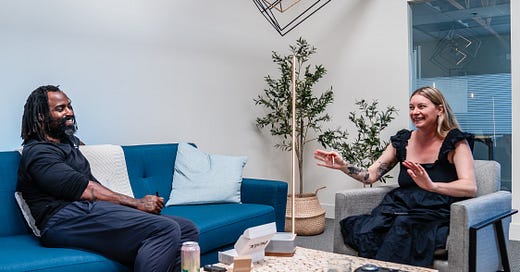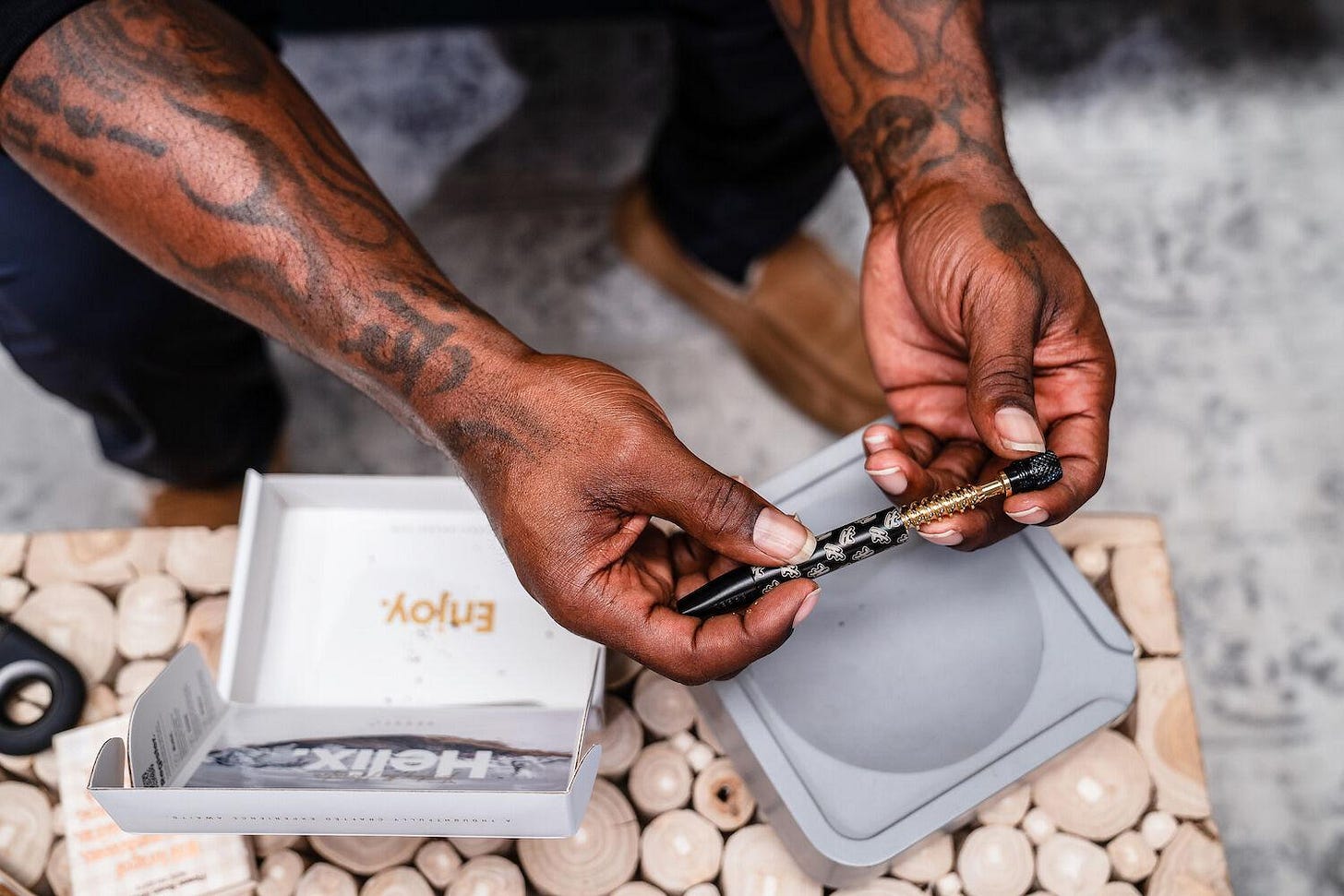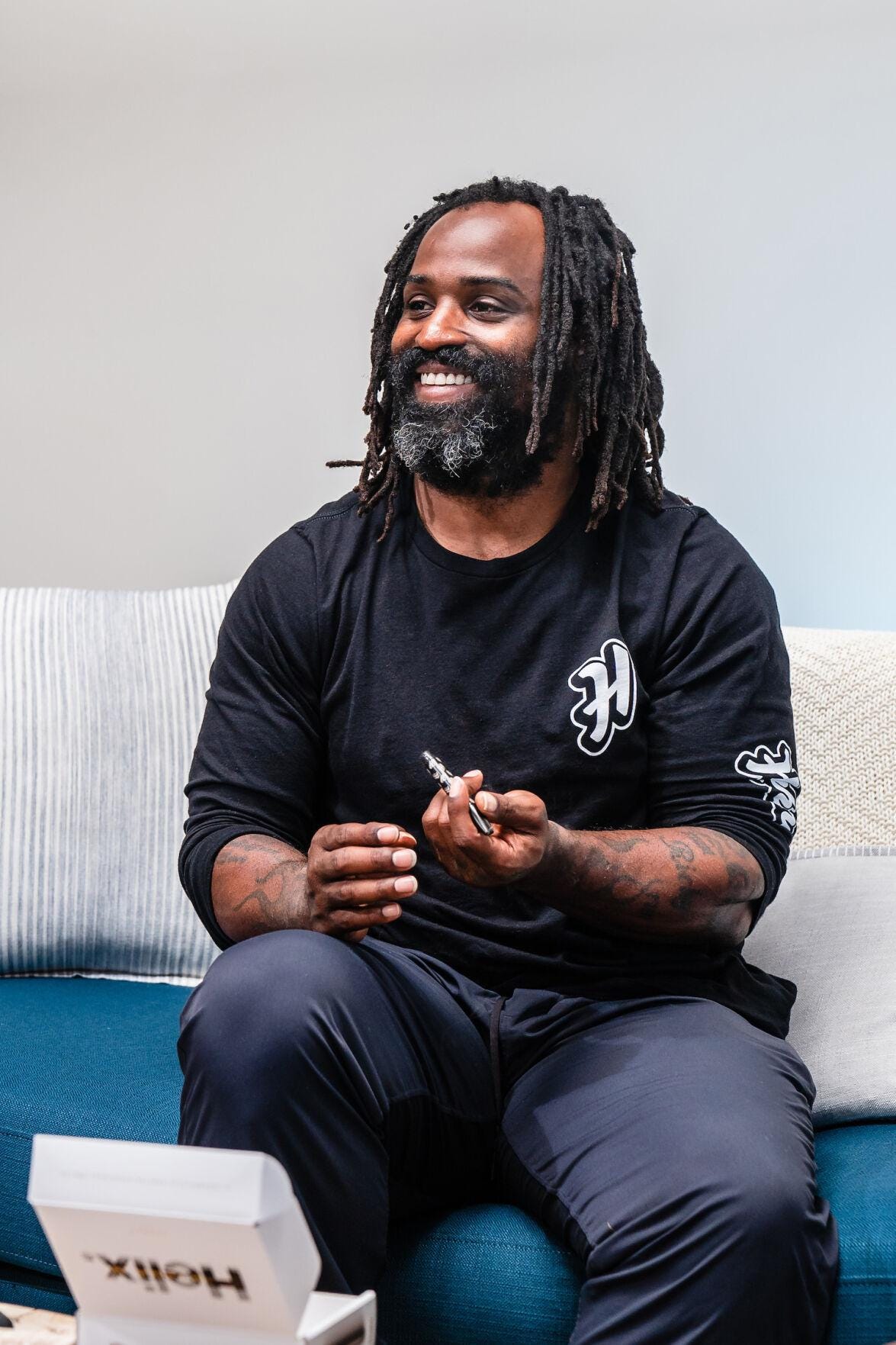All photos by Ariana Drehsler
I know, I know. It’s been quiet here. REALLY quiet. If you’re reading this, I appreciate you for hanging with me. For those who don’t know, I took a full-time job this past May, and now I’m the managing editor of San Diego Magazine. It’s been a crazy ass whirlwind and I had a feeling I’d love running a local print magazine. Turns out, I was right (but I’m also really tired). This will be the most navel-gazey post you ever get from me and I promise to not make a habit of it. But I’ve got a lot to share! Here are some updates.
I haven’t had too much bandwidth outside of the magazine to do much of anything else until recently. Lately, I found more breathing room after getting my sea legs at work, so I started freelancing a bit more on the side to keep in the cannabis reporting game. I decided to quickly fire up this newsletter, too, because I intend on keeping it going, however randomly I end up publishing.
I was hot on the conference circuit this year. Some highlights: I was on a panel at the annual Investigative Reporters and Editors (IRE) conference led by investigative journalist Brad Racino (a former San Diegan), who started NY Cannabis Insider this year, which is, IMO, the best investigative reporting on the industry at the moment, though it’s only focused on New York. I also led a panel about licensing and other changing legalities in San Diego’s cannabis industry at Voice of San Diego’s Politifest, and I was asked to speak about my unique approach to journalism over the years with an emphasis on cannabis reporting at the Southern California Journalism Association of Community Colleges. More recently, I was on a six-woman panel with luminaries like Luna Stower, JM Balbuena, and others, discussing women’s issues in the cannabis industry (how much time do you have?) at the SoCal Cannabis Career & Business Expo.
I was quoted, rather hilariously (I need to be media trained), in this Washington Post piece about the new sober curious movement written by Jason Wilson (the vast majority is not about weed and it’s a sprawling, fascinating piece). I was also profiled in this extremely fun-to-do CashOnly feature.
Even though I’ve been an absentee newsletter writer, Cannabitch racked up some nice awards this year! It won Best Blog at the San Diego Society of Professional Journalists awards this summer. Last month, it also won honorable mention (there was only a winner and a runner-up, me) at this year’s NYU School of Journalism American Journalism Online Awards for Best Solo Newsletter. Judge Lyz Lenz had this to say about it:
“Cannabitch is a wildly entertaining newsletter that is deeply revealing about American biases and vices. Bryant is a good journalist and offers analysis and perspective and context to the world of cannabis. She’s also a talented writer with an ear for a compelling anecdote. The newsletter illuminates the world of weed and in the process, the world around us.”
Regarding my freelance work, I’ve had some great stories published, including my first for The New York Times. It’s about the word “Danksgiving,” which, for the uninitiated, basically refers to smoking weed on Thanksgiving. I parsed out a social history of the term and how it’s evolved, and detailed a Danksgiving dinner I was invited to in Los Angeles a few weeks ago. It will run in print on Wednesday, the day before Thanksgiving Day. Not only is being published in the Times a milestone for any journalist, but since I’m from New York, it’s especially meaningful to me (and I still cannot believe I got the word “Danksgiving” published in The Grey Lady, lol).
Here are some other things I’ve published:
In the current print issue of CannabisNow, I wrote about the current weed scene in Barcelona, an old home of mine, and also one of my favorite weed destinations in the world.
Back in June I wrote a rant for High Times about how annoying it is that weed brands consistently ignore their core consumers: potheads.
For the policy and licensing nerds: this summer I wrote about the licensing fiasco in Chula Vista, CA for Voice of San Diego. The city arbitrarily dismissed several would-be licensees applications in favor of others. One sued and won, but there’s a problem: the city gave away all its licenses, though it was ordered to grant the entity that sued a license. Mayhem ensues. Just another day in the legal California industry!
One of my first pieces as editor of San Diego Magazine was a profile on local legendary journalist Mike Sager, who has written about LA’s underground hash scene (pre-Prop 64), the “Pope of Pot,” who started NYC’s first delivery network, and many other salacious culture stories, like the one that became the movie “Boogie Nights.” He also ghostwrote for Hunter S. Thompson once upon a time.
For Gear Patrol’s summer issue I wrote about the seemingly endless squabbling that goes on in the dab tech world.
And, also for San Diego Magazine, I interviewed Ricky Williams, who grew up here and played football at Patrick Henry High before shipping off to college and the NFL. We met at cannabis accessories company Vessel’s HQ in Carlsbad in northern San Diego County (they collaborated with him on a limited edition one-hitter with Highsman branding). I had to write this story for a more general audience, but Ricky was a genuine joy to talk to: we talked anxiety, how weed helps us, the cultivars he’s into growing and smoking these days (Hazes), and the important of preserving legacy genetics and that he plans to see that through with the help of Northern California cultivator POSIBL. The rest of our conversation is below:
Errick "Ricky" Miron—best known to the world as the Heisman-winning former-NFL superstar Ricky Williams—has come a long way from his childhood in the San Carlos area of San Diego, where he went to Patrick Henry High.
The modern-day renaissance man has been out of pro football for ten years and lives closer to L.A. now. He’s got a cannabis company called Highsman, does readings from his astrology app called LILA (he's a Gemini sun) which he co-owns, and studies traditional Chinese medicine. Earlier this year, he changed his legal last name to Miron, his wife's surname. It's tempting to say Williams is an entirely different person at age 45 than he was during his NFL days, but it feels much more accurate to say he's more himself now than ever.
"Every time I talk about this, and I do it a lot, it's always so cathartic," Williams says about his cannabis use. Williams is best known for choosing weed over the NFL, but the general understanding of his decision misses the point. Williams' dedication to weed is not just about getting high—not by a long shot. For him, it’s spiritual.
Williams says he first smoked weed during his senior year at Texas after getting dumped. A friend passed him a joint, suggesting it might help. While it didn't cause him to win the Heisman, Williams does believe cannabis got him "in the right mind frame” to perform at such a high level that, y’know, it just kinda happened. He explains that he suffers from anxiety, among other-related conditions, and weed helps.
"I remember coming home after practicing, smoking, and reflecting on my day and thinking, 'Wow, I really want to be a better person,'" Williams says. The internal chorus became too loud to ignore.
Technically, Williams left the NFL twice. First, involuntarily in 2004 after testing positive for cannabis while playing for the Miami Dolphins. After returning to play for the Baltimore Ravens, he left again in 2012, this time of his own volition.
At the time, he declined to give a reason. He retired and started down another path, knowing he was potentially giving up fame and fortune, which was kind of the point. He traveled the world, famously dropping off the grid, which inspired an Esquire journalist to track him down in Australia, where he was found soul searching, taking a load off, and smoking weed.
As I sit across from him today, a broad smile crosses his face every time I bring up Hazes, his current favorite cannabis type. He seems pretty content in his choices. While I can't claim to know his bank account, things seem to be going a-okay.
Not everyone gets it. Williams recalls meeting with the NFL's psychiatrists, who ran the drug program he was required to attend because of his infractions. It was clear that what he saw as a considerable enhancement in his life only confounded others. "They said, 'We thought you were just some pothead surfer from California. We didn't realize that there was something more going on—it’s a travesty,'" he remembers them saying. “I was told I was going to get scrambled eggs for brains or that [cannabis] was an escape. But instead, I found that when I smoked, I was more in touch with myself, with how I was feeling. I learned from that."
But his education continues.
Recently, Williams completed the Ganjier program, a new certification for anointing sommeliers of weed. He learned about terroir, a French term that claims plants, (like wine grapes, or cannabis) exhibit different characteristics based on where they're grown. "I think if it applied to humans, there would be terroir of growing up in San Diego, right? The smell of cannabis in the air, that vibe."
"Are you saying that weed is part of the cultural terroir of San Diego?" I ask. Williams smiles as big as he seems able. "One-hundred percent.”








👏🏼👏🏼👏🏼👏🏼👏🏼